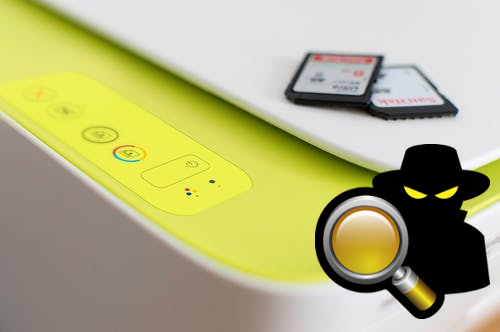There are hundreds of millions of printers around the world, but it’s believed that less than 2% of these are secure.
IT leaders must start to think of printers the same way they think of PCs in order to effectively secure enterprise networks.
Every access point puts your network at risk. Printers and PCs are architecturally comparable and, if left unsecured, either one can make your network vulnerable to cyberattacks.
How HP Printers Make Your Organisation More SecureMost printers now do more than print. They scan, send and store potentially sensitive information. These innovative networked printers help streamline business processes and increase productivity, but these features can also leave your fleet vulnerable to attack. If your printer fleet is connected to a network, it should be protected in the same way as your PCs and other network endpoints.
In The Wolf, a new short film from HP Studios starring Christian Slater, the security vulnerabilities of endpoint devices such as printers and PCs are revealed. Showing how a lack of malware protection, personal information such as birthdays, or no user authentication can expose an organisation to serious cyber hacking, the film highlights some all-too-real vulnerabilities.
Protecting your printers doesn’t have to be difficult, as new security tools make it easy to meet baseline requirements and keep your network safe.
Stored print jobs, network printing, insecure settings, lack of centralised control and accessible output trays are just a few factors that make your organisation’s printers more vulnerable than you may think.
Here are five ways your printers could be putting your organisation at risk:
1. The information they holdPrinting and imaging devices store user credentials and other sensitive data such as stored print jobs. If these are not encrypted or regularly erased there is the chance they and their confidential details will be accessed.
2. Multifunction printers These reside on your company network and could pose a risk to its security because they can also be hacked like a computer and be an entry point for malware and viruses.
3. Push printingIf there isn’t a pull printing requirement, sensitive documents may be retrieved by any user. Anyone who has access to printer settings can exploit permissions if the settings aren’t restricted to admin-only access.
4. Localised printer controlLack of centralized printer control can lead to inefficient, incomplete and time-intensive efforts by IT to establish and maintain printer security settings.
5. TraysOutput trays are an easy way for sensitive data to fall into the wrong hands. Unprotected input trays could also lead to the theft of special paper, such as stock used for cheques.HP offers solutions to protect organisations of all sizes. HP print security isn’t just about securing a printer, but also about helping to secure your entire network with real time threat detection, automated monitoring and built in software validation. No one else offers this combination of protection.
HP Enterprise printers can detect, protect and even self-heal from attacks, automatically and in real time.
For more details on improving your printer security with HP contact ACS on: 01 846 4200 or email us: sales@acs.ie


